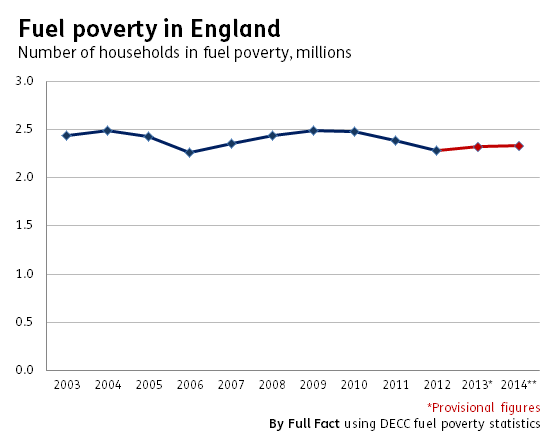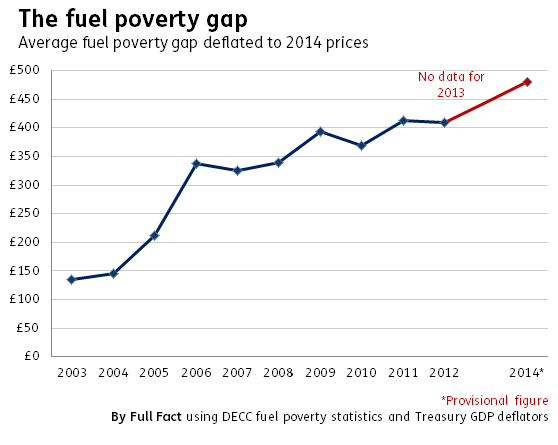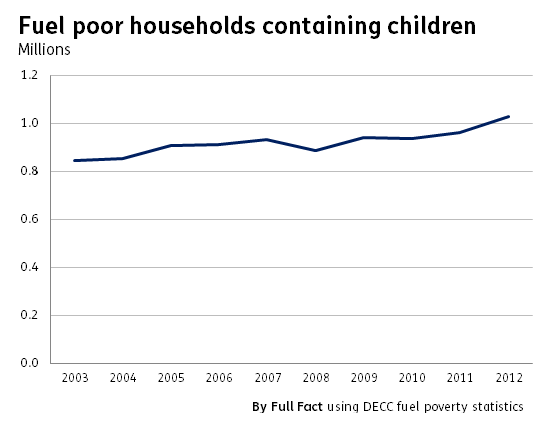Beyond cherry-picking: the fuller picture on fuel poverty
Debate over the government's record on fuel poverty kicked off in Parliament yesterday.
Both sides selected their figures carefully; if you'd listened to only one side of the argument you could be forgiven for thinking either that the impact of fuel poverty is declining, or on the up.
The reality is more complex. The number of fuel poor UK households has fallen under this government, but in England at least the average burden of fuel poverty is getting bigger. And the number of households in fuel poverty in England that contain children is at its highest in a decade.
The number of households in fuel poverty has fallen since 2010
"It is worth noticing that fuel poverty went up under the previous Government, but under this Government it has gone down by 5% according to the latest figures. It is interesting that the figures have gone down under both the old definition and the new one." — Energy Minister Ed Davey MP
Until August last year, households were considered to be fuel poor if they needed to spend more than 10% of their income to stay warm. But a review found the measure to be "misleading" and to "encompass households that clearly are not poor."
Consequently, in England it's been replaced by a new measure, which counts households as being in fuel poverty if their fuel requirements were above average, and if paying these costs would push their incomes below the official poverty line. The government publishes figures by this measure for 2003-2012, and provisional estimates for 2013 and 2014.
According to the newer measure, the number of households in England that are in fuel poverty has fallen from 2.47 million in 2010, to a projected 2.33 million in 2014. This is a fall of close to 6%.
Both figures are consistent with the general trend over the past decade; the level of fuel poverty varies by household incomes, energy prices, and the energy efficiency of homes.
By the older measure, the number of households in fuel poverty in the whole of the UK was estimated to have fallen from 4.75 million to 4.5 million from 2010 to 2012.
The average burden of fuel poverty is growing
"…the gap between what households can afford and what they are expected to pay has increased to £480 under this Government" — William Bain MP
The same dataset shows us the average "fuel poverty gap", defined as "the amount by which the assessed energy needs of fuel poor households exceed the threshold for reasonable costs."
It's been on an upward trend in real terms for the last decade.
The government's figures between 2003 and 2012 are given in 2012 prices, while the projected gap for 2014 was given in cash terms as £480. For consistency's sake we've calculated the entire series in 2014 prices using the GDP deflator forecasts from the Treasury. Data for 2013 isn't available.
The number of fuel poor households containing children is at a high
"There are more than 1 million families with children in fuel poverty, which is more than there have been at any point during the past 10 years." — Shadow Energy Minister Caroline Flint MP
In 2012, the latest year for which a breakdown is available, the number of families with at least one dependent child passed 1 million.


